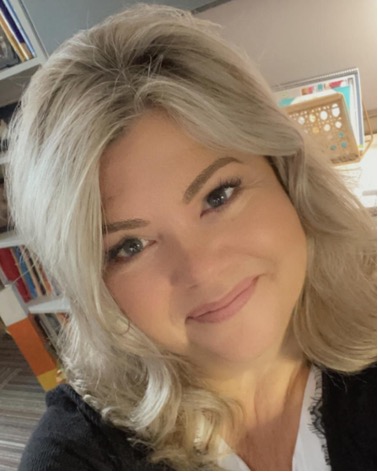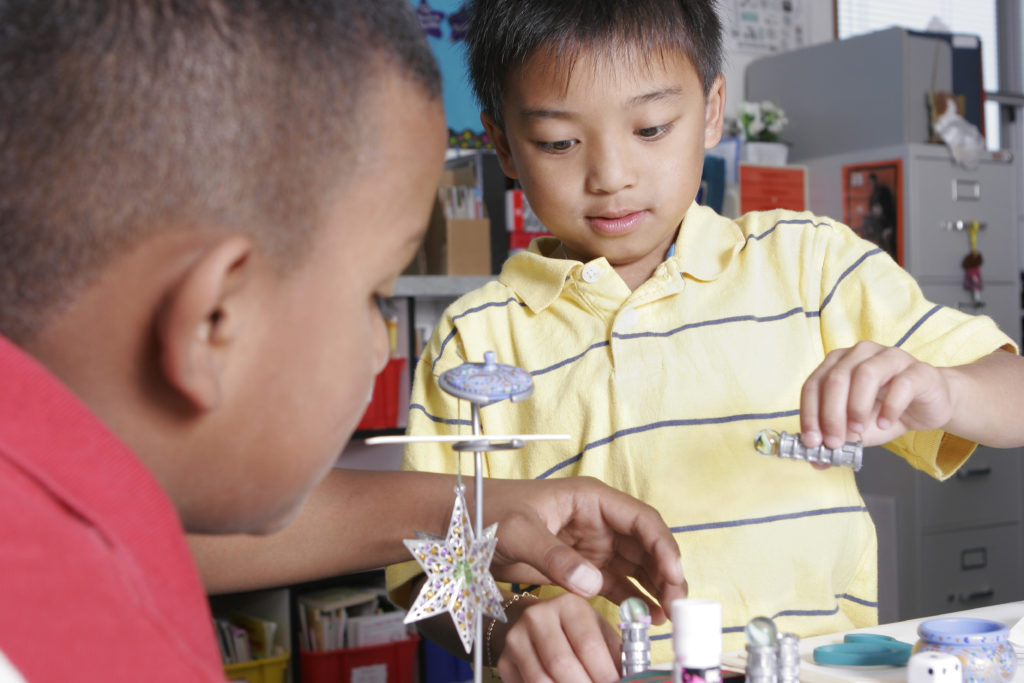
We’re honored to interview Dana Hepner, principal at Washington Elementary in Michigan, about her school’s thriving implementation of the Caring School Community program.
Reflecting on the Washington community’s success, Ms. Hepner shares, “Students are much more aware of how their actions and behaviors impact those around them and our school culture as a whole. It has been a delight to watch students grow in their language for recognizing behaviors and becoming more aware of their choices. ”
Tell us a little about yourself, your school and district, and the students that you serve.
My name is Dana Hepner. My career in education began in 1994 as a classroom teacher at the elementary level in an inner city public school system. It was there that I found my true love of teaching students from a range of backgrounds and experiences.
In 1997, I relocated for my family and joined the wonderful district of Romeo Community Schools in Michigan. I continued as a classroom teacher in a variety of grade levels until 2014, when I made the move to Central Office and became the district’s Elementary Math Coach for four years.
In 2018 I was honored to be named the principal of Washington Elementary, a school very dear to my heart as my final years as a classroom teacher were at this building.
I am incredibly proud of our diverse population of students and the dedicated staff of Washington that work tirelessly to move mountains in the name of what is best for children.
I am incredibly proud of our diverse population of students and the dedicated staff of Washington that work tirelessly to move mountains in the name of what is best for children.
Washington is one of five elementary schools within our district. We serve approximately 400 students in grades Young Five through fifth grade.
We are proud of the diversity of our school, and of the district’s elementary schools, we house the largest percentage of English language learners and economically disadvantaged students.
We have a very involved parent community, and a staff that is deeply committed to our students.
As principal, what is the most rewarding part of serving Washington Elementary for you?
Watching our students grow and develop as they progress through their elementary school years is definitely the most rewarding.
How long has Washington Elementary been implementing Caring School Community? Tell us a little about your implementation.
We began the journey to implement Caring School Community during the 2019–2020 school year.
When I became the principal at Washington, the staff was all in agreement that we needed a consistent and comprehensive program to support Social Emotional Learning (SEL) at our school, due to student behaviors.
A team came together and researched many different options and agreed that Caring School Community would best meet the needs of our students. We knew that the direct lessons and parent involvement components would support us all getting on the same page.
A team came together and researched many different options and agreed that Caring School Community would best meet the needs of our students. We knew that the direct lessons and parent involvement components would support us all getting on the same page.
Despite the pandemic, we pushed ahead during the 2020–21 school year, working closely with a trainer from Collaborative Classroom and committed to a “slow roll” of the program at our school.
As a staff we committed to daily class meetings and maintained this expectation for all. A building calendar was made that kept us all on track with which lessons we would be using each week.
Our SEL team also aligned the components of the CASEL framework and began a “Word of the Week” theme to support the lesson topics.
As the year progressed, teachers naturally began “sampling” other aspects of the program and then we met at the end of the school year to plan forward for 2021–22. We decided that we would add the family component as well as Closing Circles. We also rearranged our implementation calendar and expanded our Word of the Week initiative adding hallway and classroom signage.
As we entered the 2022–23 school year, and all the COVID restrictions were removed, we once again rearranged our implementation calendar, and added the component of Classroom Buddies.
Our SEL team also added five assemblies during the school year to align with the CASEL themes that went with our Words of the Week. Students who exemplified these themes were recognized, and the new theme was introduced to all.
For the 2023–24 school year, we are now diving into the final component of Caring School Community, the Caring School Discipline part.
We spent some time virtually with our Caring School Community trainer to devise a launch plan, again making sure to only take on the changes in small, manageable chunks.
We spent some time virtually with our Caring School Community trainer to devise a launch plan, again making sure to only take on the changes in small, manageable chunks.
We have a trainer coming to our building to work with our staff on understanding the Caring School Discipline component and begin our work as adults to understand how our work with students regarding discipline can support and extend the work we have already begun.
In addition, we will use the trainer to bring any new staff members up to speed on what we have already accomplished, so that we have a consistent approach to Caring School Community within our building.
We are really excited to continue this journey as a team and appreciate all the support we have received from Collaborative Classroom.

What do you appreciate about Caring School Community?
The comprehensiveness of the program and available support have made implementation a smooth process for us. There are multiple ways to implement depending on staff readiness.
We appreciate the ease and effectiveness of the lessons and components to engage families in a consistent and cohesive program.
What have you noticed about your students’ learning and engagement?
Since we implemented Caring School Community, our students are much more aware of how their actions and behaviors impact those around them and our school culture as a whole.
It has been a delight to watch students grow in their language for recognizing behaviors and becoming more aware of their choices.
Since we implemented Caring School Community, our students are much more aware of how their actions and behaviors impact those around them and our school culture as a whole.
Now students walk down the hall and greet each other and staff members, and they look each other in the eye. We hear them use the words of the week and talk about the strategies they are learning in their classrooms.
Students have more empathy for each other’s differences. They are also more aware of how showing kindness supports our entire community.
Discipline referrals have declined—and now our teachers are better equipped to address unwanted behaviors and link them to the themes and lessons of Caring School Community, creating a common language and expectation for all.
Discipline referrals have declined—and now our teachers are better equipped to address unwanted behaviors and link them to the themes and lessons of Caring School Community, creating a common language and expectation for all.
How has Caring School Community affected or changed your own teaching and learning?
Implementing Caring School Community was the first major undertaking of a new initiative for me as the principal here at Washington that was not academic.
This experience has given me a real appreciation of how important it is to not go faster than the pace your staff is ready for. By respecting their pace, you are more likely to create the conditions for a very solid implementation.
The consistency of lessons and language within the classrooms supports our school as a whole: any teacher can speak to any student using the same frame of language and learning.
The consistency of Caring School Community lessons and language within the classrooms supports our school as a whole. Any teacher can speak to any student using the same frame of language and learning.
What insights would you share with a school leader who is planning to implement Caring School Community?
Listen to your staff and students in regards to what needs exist and work in conjunction with them to implement the Caring School Community program at the pace that is right for your school.
Even implementing a small piece such as Class Meetings can impact students in large ways.
As your staff begins to see the impact of these pieces, they will naturally want to expand the program as it is easy to scale up or down any time.
Communicate with your families around the new initiative! Be available to answer any questions, since parents will most likely become your biggest advocate for expanding the program as they hear the great things their children are learning around social and emotional health.
Lean into the resources that are provided through Collaborative Classroom and their amazing team of facilitators whenever questions arise.
***
Related:
Learn more about Caring School Community
Read SEL Essentials: Reimagining Our Social and Emotional Learning Priorities
Read How One School Built Classroom Communities and Grew Students’ Sense of Belonging
